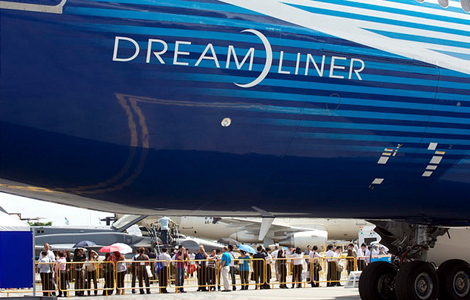Why Do Airliners Have Teething Problems?
If they’re introducing new technology, problems are almost guaranteed
The people who manage airline companies are torn between two opposing ideas, both driven by cost concerns: having the very latest technologies in their aircraft, on the one hand, and sticking with the time-tested and proven on the other. If you don’t think airlines are a capital-heavy industry, just take a look at what’s parked on the ramp at any terminal airport. Even at a smaller regional airport, the airplanes and hardware have a total value in the millions. And that’s where the cost concerns come from. It takes a steady stream of revenue from passenger and freight operations to service the debt on all that stuff.
When fares were regulated, the numbers were stable and predictable, but deregulation arrived in 1978. Before that, airlines marketed mainly on their images as reliable or glamorous — or even hip (Braniff’s “the end of the plain plane”). With competition, the only marketing tool an airline had was the price of a ticket, and fares fell. Throughout the 80s, 90s — and even into the new century — major airline companies collapsed by the dozens, leaving merged giants that dominated in certain regions to survive.
Price competition will inevitably drive cost cutting, and airlines have turned to the suppliers of their aircraft for help. The manufacturers have to attack not the list price of the aircraft but the life-cycle cost of the airplane’s operation, which will total many times its purchase price by the time it is retired from service.
So when Boeing’s 787 Dreamliner makes headlines because of an equipment bay fire, as it has recently, it should hardly be surprising. In order to produce an airplane that would save its customers on the order of 20 percent in cost of operation, the company had to turn to completely new technologies in materials, propulsion and electronics. When you promise that kind of savings to a customer, you do one thing: you reduce the airplane’s weight. Which helps to explain why the 787 has a completely new type of battery that uses lithium instead of lead and acid or nickel-cadmium in an electrochemical closed system that produces a direct-current voltage. The battery is lighter, and it’s the same type that invaded the laptop computer market for the same reason — and occasionally with the same result: Sony made some laptop batteries back in 2006 that overheated and had to be recalled. There’s little difference between what happened to some unlucky laptops and what occurred in the battery of a 787 parked at Boston.
Airlines and their suppliers expect some birthing problems when any new type enters service. If there are new technologies aboard, those problems are almost guaranteed. The Boeing 747 had new large-fan engines, and after some time in service, their internal housings distorted from perfect circles to ovals, causing catastrophic wear. For a time, Pan Am’s global fleet carried spare engines in pods that were added near the fuselages of the jumbos. The airborne “pool” of replacements minimized the schedule delays when an airliner went out of service.
The introduction of so many new technologies at once in the 787 is almost unprecedented, and prospective passengers can take comfort in the fact that the problems have everyone’s attention. After all, these changes have the ultimate goal of keeping the price of a ticket low.
